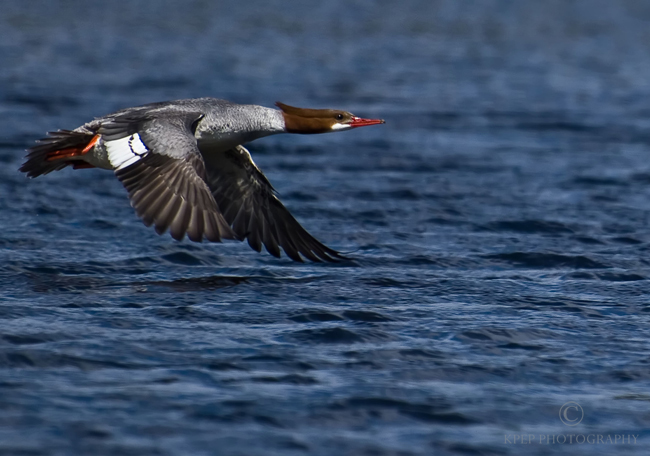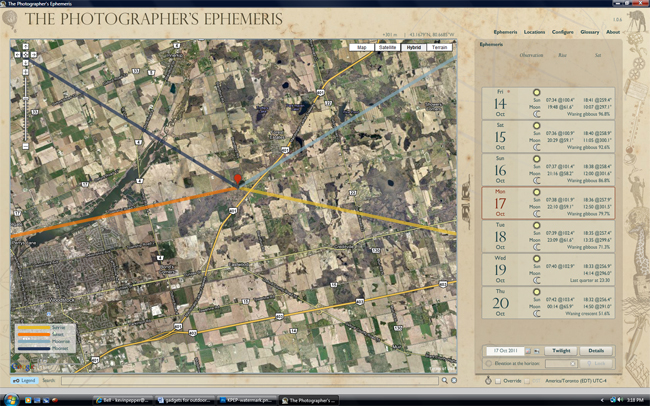As Photographers we tend to be a gadget-oriented group. We buy the latest and greatest advertised gadget, accessory, lens or camera with hopes that it will better our craft. With my head hung in shame I admit that I too have some useless gadgets filling a few drawers and taking up room in my camera bags. By the time I give them away I will probably only have used them once. But I bought them, and, well, I learned the hard way on more than one occasion that it’s not always the gadget that makes the difference in the quality of photo I get. Its the six inches behind the camera and how prepared I was before I got to a location.
As a nature photographer I have learned that the most important pieces of gear to have in your repertoire are not the latest and greatest camera items. The most important things are the items that you should have to protect you and your gear from harm. It’s the practical gear, the gear you learn you need through your own experience and mishaps that makes the difference. Each of these items at one time or another have been the sole reason I had a successful nature photo shoot. The best part, almost every item I listed below is inexpensive and can be bought at any hardware or outdoor store.
A trusted alarm clock(s)
My absolute favorite time to shoot is just at the end of the blue hour. The sun starts to turn blues to purple and the hint of yellow and orange graces the horizon. The next 30 minutes are pure heaven for me. Nothing upsets me more than when a planned pre-dawn shoot is missed because I slept in.
I have two alarm clocks, one on the dresser and one on my blackberry. Both set so I have to physically get out of the bed to turn them off.
Tools, glue and bag of rice
Ever been out and dropped your camera or snapped a piece on your tripod and the whole shoot was a bust? If your answer is no, my response is; “It’s only a matter of time”.
I carry a screwdriver set with hex heads to fit all my tripod screws and I always have crazy glue in a separate bag in case I need to reattach anything.
The bag of rice… well it’s too heavy to carry, but you may want to have one handy back at the house. If you get water in your gear, putting it in a bag of rice is your best chance to suck out any moisture in your camera or in your lens.
DO NOT USE a heat lamp or lamps to try and dry out a camera… use rice, say a lil prayer to the camera gods and have the insurance company’s number handy just in case it doesn’t work.
Insurance Riders
After the last paragraph I figured I would address this now. I would suggest you contact your insurance company and discuss having an insurance rider on your camera gear. It is peace of mind that will eliminate a huge headache if anything happens to your gear.
Lay everything you own out on a table, take a photo of all your gear and then list out everything you own. Submit both to the insurance company for their files. This will eliminate any questions they may have that will delay the claim and get you back shooting as fast as possible.
Extra batteries and memory
Imagine being miles from your car, hours from a power source, the elusive snowy owl appears in the field in front of you and you are set to take a series of photos…. Only you can’t… the cold weather has zapped your battery dead or you have no more memory left.
The moral of the story; bring extra batteries and memory cards. I never leave home without 4 memory cards and three fully charged batteries.
A little hint, in cold temperatures keep the batteries inside your coat and keep them warm.
Waterproof boots and hip waders
Some of my best images are taken near or from the water. Sometimes the difference between a good photo and a great photo is perspective. You walk up the west side of a river, the sun is coming up and you wish you were on the east side to capture the golden hour with the sun to your back. The unprepared photographer will shoot the undesirable image from the west bank, while you will have the sun at your back capturing the image the people on the other side wished they were capturing.
Their flying birds of prey will be black silhouettes, while yours will have full colour with a glint of sun in their eye.

A head lamp or flashlight
I hike in the dark in order to be at a location before the blue hour, or leave a location after dusk. A headlamp and and/or flashlight in my camera bag helps me find my way back to my car. There is nothing worse than being caught out in a forest or field without a light source. The light source also is a good way to use as fill light, or for light painting objects like rocks in a water scene with a pre dawn sky.
An assortment of plastic bags and towels
You have invested a lot of money in your gear, so protect it. And a few 5 cent bags will do the trick. They will roll up in your camera bag and can be thrown over your camera equipment fast and efficiently.
Bug spray or a bug net.
Nature is full of bugs that want to eat you for breakfast or dinner… or frankly just be a pest. But why let this stop you from getting that perfect photo. Some of the best foilage and animal photo opportunities are during the height of black fly or mosquito season.
Word to the wise, keep the bug spray away from the camera gear.
A compass and handheld GPS
I am directionally challenged. For this reason I carry a compass when I am out on a location where I have never been before. It helps me navigate fast and allows me to see, at a glance, which way the sun will raise. The GPS is also an awesome tool to mark locations that you see for future locations as well as a handy navigation tool for trekking in and out of a location.
Along the same lines as this is the “Photographers Ephemeris“. An awesome desktop and mobile tool all nature photographers should have.

Cell Phone
Now that you all know I am directionally challenged and getting lost is not that far out of the question… a cell phone is a must for me. You never know when you need to call the park ranger to come find you, or call your significant other to tell her you are going to be late because Winnie the Pooh’s older brother has you up a tree and is licking his chops.
Outdoor clothing
Rain and windy weather often produce the best photo opportunities. Being prepared with clothing that keeps you dry in the field is a must. These items are the most expensive items on my list, but it doesn’t have to be. You can either ask for them as christmas and birthday prezzies, or wait and invest in over time.
Or, for those that embrace comfort over style, swallow your pride and head out to Value Village. A good second hand store will have quality all weather gear at a fraction of the price. At the very least, buy a lightweight, waterproof shell that you can pack in your camera bag.
My usual attire is a weatherproof jacket (second hand store purchased), a ball cap (my lucky ball cap i was wearing when i got a hole in one), layers on top (t-shirt, sweater) and a pair of Columbia pants that turn from full legged pants to shorts in just a few seconds… I also keep a spare jacket, shirt, pants and shoes in my car.
Be a boyscout, be prepared… and happy shooting!
Article by Kevin Pepper
| PHOTONews on Facebook | PHOTONews on Twitter |







